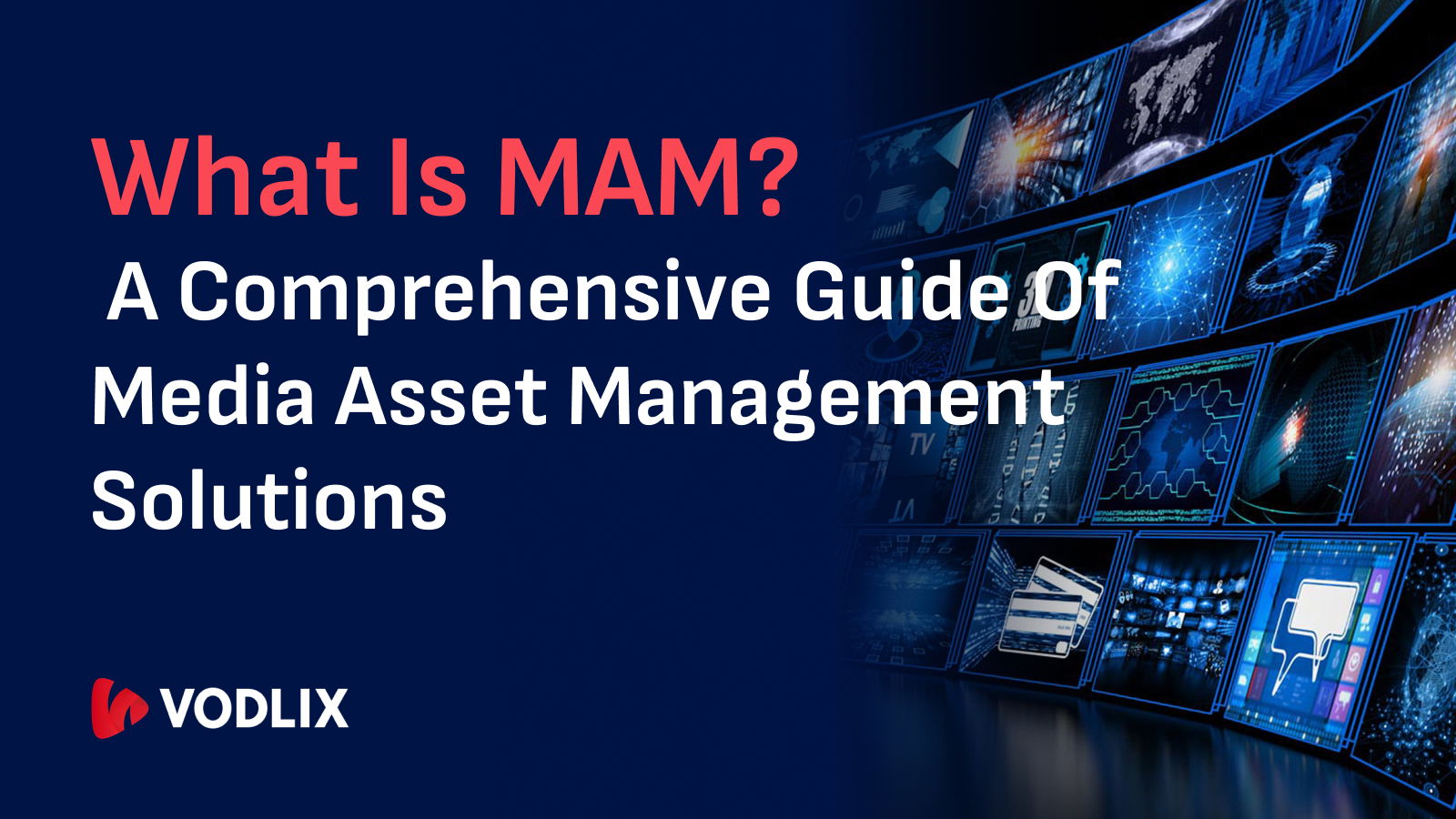In today’s digital age, businesses are generating vast amounts of media content across various platforms. Managing, storing, and retrieving these digital assets efficiently can be challenging. This is where Media Asset Management (MAM) comes in. It’s a robust system that simplifies the management of media files like videos, images, audio, and other digital content. Whether you’re working in broadcasting, film production, marketing, or any industry that deals with large volumes of media, a good MAM system is indispensable.
In this comprehensive guide, we’ll explore everything you need to know about MAM, how it works, its key benefits, and how it differs from Digital Asset Management (DAM). By the end, you’ll understand why MAM solutions are essential for businesses looking to streamline media workflows.
What is Media Asset Management (MAM)?
Media Asset Management (MAM) refers to the processes, software, and technologies used to manage, store, retrieve, and distribute media assets such as video, audio, and images. MAM helps businesses organize and handle these assets through their entire lifecycle, from creation and editing to final distribution.
Unlike traditional file storage systems, MAM solutions provide powerful features to streamline workflows, improve collaboration, and ensure assets are easily accessible across various platforms and devices.
Key Features of Media Asset Management Systems
A well-designed MAM system incorporates several core features that make managing large media libraries efficient and effective. These features include:
1. Asset Ingestion
The first step in any MAM workflow is the ingestion of media assets. This process involves importing media from various sources like cameras, external hard drives, or cloud storage into the MAM system. A seamless ingestion process ensures that all assets are categorized and organized for easy access.
2. Storage and Organization
MAM systems offer robust storage solutions that allow media assets to be stored in an organized manner. Assets are categorized with relevant metadata such as tags, keywords, and descriptions, making it easy for users to find and manage content without wasting time on manual searches.
3. Metadata Management
Metadata is essential for the organization and retrieval of media assets. With metadata, users can search for specific files based on detailed information like creation date, file type, description, and more. It’s like having a digital filing system that helps you locate any asset quickly.
4. Version Control
MAM systems support version control, allowing teams to track and manage different versions of the same asset. This ensures that everyone is working with the most up-to-date version, reducing confusion and errors during collaboration.
5. Search and Retrieval
A powerful search and retrieval function is critical in MAM solutions. Advanced search features allow users to filter content by metadata, keywords, and other attributes, ensuring assets can be retrieved quickly without unnecessary delays.
6. Collaboration and Workflow
MAM systems foster collaboration by enabling multiple teams to work on the same project simultaneously. Workflows can be customized to streamline the production process, from the initial asset creation to final approval and distribution.
7. Content Distribution
Once the media assets are ready, MAM systems facilitate distribution across different platforms and formats. Whether you need to broadcast a video, share it on social media, or distribute it to a website, MAM systems ensure assets are delivered in the appropriate format for each platform.
Benefits of Using a Media Asset Management System
Implementing a MAM system can offer a wide range of benefits, particularly for organizations dealing with a large volume of media content. Here are some key advantages:
1. Enhanced Efficiency
MAM systems significantly reduce the time spent searching for and organizing media files. With everything stored in one centralized location, teams can access and retrieve assets quickly, accelerating the production process and improving overall workflow efficiency.
2. Improved Collaboration
A MAM system enables multiple users, whether they’re in different locations or working remotely, to access and collaborate on media projects in real time. This makes it easier for teams to share assets, provide feedback, and streamline approval processes.
3. Scalability
As your media library grows, a MAM system can scale with you. Whether you're managing a small project or a large-scale media operation, MAM solutions are built to handle vast amounts of content, ensuring your media management practices remain efficient as your organization expands.
4. Security and Access Control
MAM systems often come with security features such as encryption, user authentication, and granular access controls. This ensures that only authorized individuals can access sensitive assets, protecting intellectual property and reducing the risk of data breaches.
5. Cost Savings
By optimizing storage and reducing the time spent managing media files manually, MAM systems can help businesses reduce operational costs. With faster workflows and more organized content, businesses can avoid duplication, lost files, and unnecessary spending on storage solutions.
MAM vs. DAM: What's the Difference?
While Digital Asset Management (DAM) and Media Asset Management (MAM) are often used interchangeably, there are notable differences. Both systems manage digital content, but the distinction lies in the types of assets they focus on.
DAM systems are broader and can handle all types of digital content, including documents, images, logos, presentations, and more.
MAM, on the other hand, is specialized for handling media assets, particularly video, audio, and broadcast-related content. MAM systems offer more advanced tools tailored to media workflows, such as editing features, metadata tagging specific to media, and real-time collaboration on video production.
Popular Media Asset Management Solutions
Several MAM solutions are available in the market, each with its own set of features to cater to different industries and business needs. Some of the top MAM tools include:
1. Avid MediaCentral
Avid MediaCentral is one of the most popular MAM systems used by media professionals, especially in broadcasting and film production. It provides comprehensive features for video editing, collaboration, and content distribution, helping teams work together seamlessly.
2. CatDV
CatDV is a flexible MAM system primarily used by video production teams. It offers powerful search capabilities, integration with editing software, and cloud-based solutions for better collaboration across teams.
3. Adobe Experience Manager (AEM)
Adobe Experience Manager is a robust DAM and MAM platform that allows organizations to manage and distribute their media assets across various channels, including web, mobile, and social media. It’s especially popular among marketing teams for content creation and distribution.
4. Cinegy
Cinegy offers broadcast-grade MAM solutions, providing tools for media storage, management, and distribution. It’s known for its high-performance workflows and integration with other broadcasting tools.
Use Cases for Media Asset Management
MAM systems are used across a wide range of industries. Here are some examples of how MAM solutions benefit different sectors:
1. Broadcasting
Television and radio stations use MAM to manage video footage, live broadcasts, and on-demand content. It helps ensure content is organized and easily accessible for both on-air and post-production use.
2. Film Production
In film and video production, MAM systems manage video clips, scripts, and production schedules, streamlining the workflow from shooting to editing to final distribution.
3. Marketing and Advertising
Marketing teams use MAM to organize and distribute multimedia content like advertisements, product videos, and social media campaigns. This helps ensure content is optimized for various platforms and campaigns.
4. Education and Training
Educational institutions use MAM for managing e-learning resources, training videos, and other instructional content, making it easily accessible for students and instructors.
Conclusion: Why MAM is Essential for Modern Media Management
A Media Asset Management (MAM) system is essential for businesses that rely heavily on media assets. Whether you are involved in broadcasting, film production, marketing, or any industry that deals with large volumes of digital content, a MAM solution streamlines your media workflows, improves collaboration, and ensures your assets are securely stored and easily accessible.
By adopting a comprehensive MAM solution, organizations can enhance efficiency, reduce costs, and improve the overall management of digital media. In an era where digital content is king, MAM is no longer optional—it’s a necessity.
Ready to transform your media operations? Get in touch with Vodlix today and discover how effortless media management can be.


.png)




